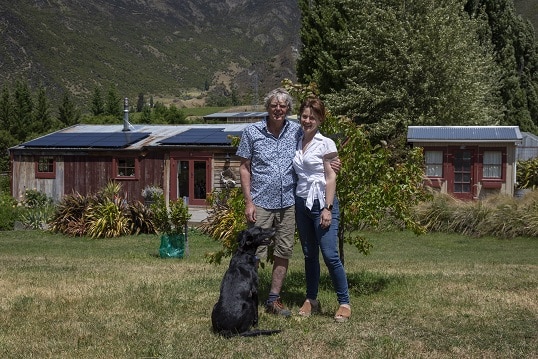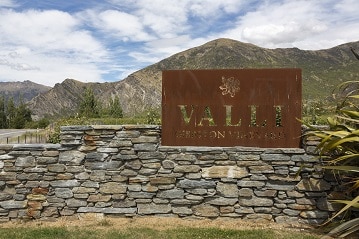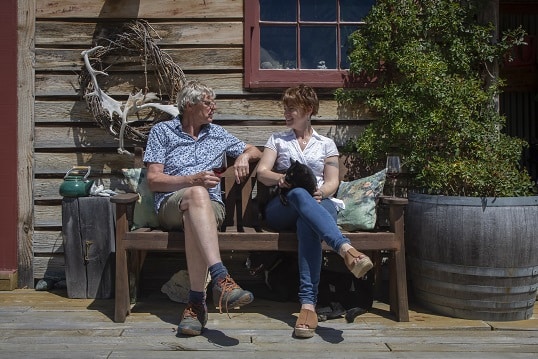Case Study: Valli Wine
From 1930s Central Otago shearing shed to solar-powered sanctuary in the vines
The Central Otago sun is a key ingredient in the production of Valli Vineyard’s award-winning Pinot Noir. So for winemaker Grant Taylor and his wife Nicole, tapping into this golden resource to power production beyond the vine just makes sense.
 Enlisting our help Grant and Nicole transformed their converted 1930s shearing shed home in Gibbston Valley into a solar-powered sanctuary amongst the vines. The conversation about switching to solar was sparked initially by the dilemma of powering a beer fridge at Valli’s remote vineyard in Waitaki.
Enlisting our help Grant and Nicole transformed their converted 1930s shearing shed home in Gibbston Valley into a solar-powered sanctuary amongst the vines. The conversation about switching to solar was sparked initially by the dilemma of powering a beer fridge at Valli’s remote vineyard in Waitaki.
“Whether you farm sheep or grow grapes, there are unique challenges to face when running a rural business. Ensuring the power is on, and stays on, in a remote location is definitely one of them. After a long day harvesting under the Central Otago sun, a cold beer is essential.”
As well as keeping the power on, Grant and Nicole were interested in three things: reducing their impact on the environment, reducing their energy bills, and – with a beautifully eclectic building it’s final destination – a good looking system.
“I find humour in the juxtaposition of the 21st century technology – the futuristic glowing Tesla Powerwall and sleek black solar panels – against the rustic corrugate of our Central Otago shearing shed. It’s quite a contrast and makes for a beautiful aesthetic.” Grant Taylor.
The couple are deeply connected to the land and heritage of the region they call home. Creating expressions of the Otago sub-regions is at the heart of what they do at Valli Vineyards: wine is simply the medium they employ to do so. So when a classic Central Otago shearing shed came up for sale they jumped at the opportunity to restore it to, and beyond, it’s former glory. Naturally for the winemakers, harnessing the sun to power their home sustainably was the perfect way to complete the restoration.

Much like laying plans for a vineyard, Valli Vineyards and the our team worked with the pitch, aspect and materials of their roof to design a system that would achieve the best results. 22 solar panels were installed and are now busy producing nearly 9000kWh of power per year. With self-sufficiency also a priority, Grant and Nicole opted to add a Tesla battery to their solar system, allowing them to store any of the day’s excess generation to be used at night.
This tailored solution is projected to save Grant and Nicole around $2,893 per year on their energy bills. It also has the effect of ‘fixing’ their energy rate until the system is paid off and starts producing free electricity in around 8 years – a welcome piece of certainty in these times!
But above all, transforming empty roof space into something that is good for the environment has filled them with a huge sense of well-being. Through the Tesla Mobile App, Grant and Nicole can see their contribution to reducing the planet’s CO2 in real-time. Their system saves nearly 1000kgs of CO2 a year. That’s the equivalent of driving from Gibbston to Auckland five times.
“We have an amazing sense of well being and it is only day three! We have had such a wonderful experience working with the Nelson Solar crew, 100% , start to finish.” Nicole Schofield.
A taste of their Pinot Noir just got a little smoother.
 The system
The system
22 x Jinko solar panels
5 kW Fronius Inverter
13.5 kW Tesla Powerwall 2
Installed by Nelson Solar over three days
The results
Power production: 8928 kW hours per year
Projected energy bill savings: $2893 per year
Projected carbon footprint reduction: 982 kg C02 per year
If you are interested in installing solar panels then fill out the form below and one of our team will get in touch with you to see how we can help.